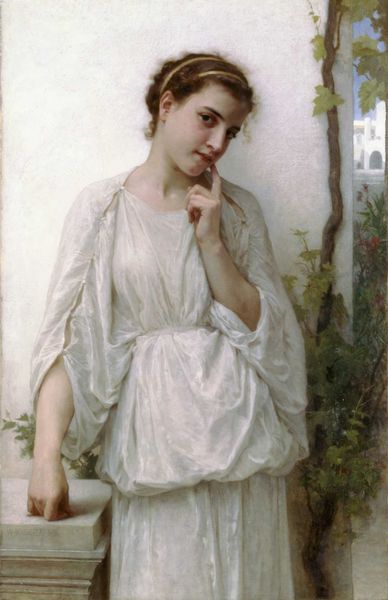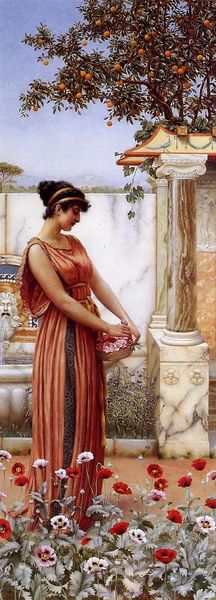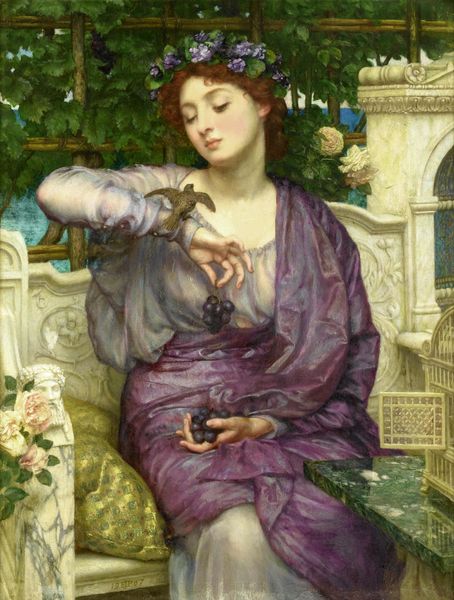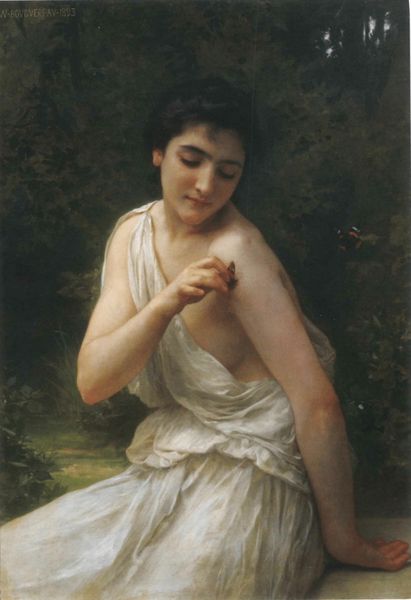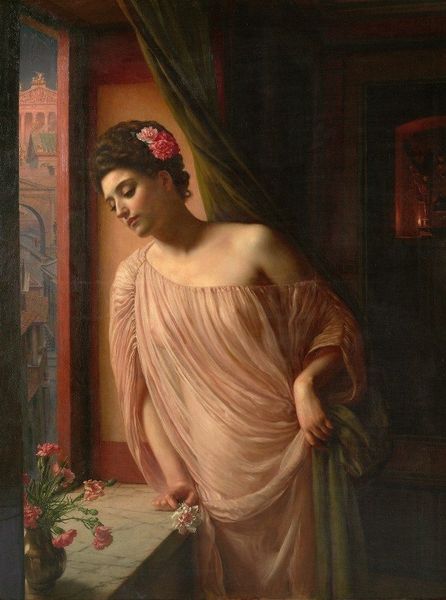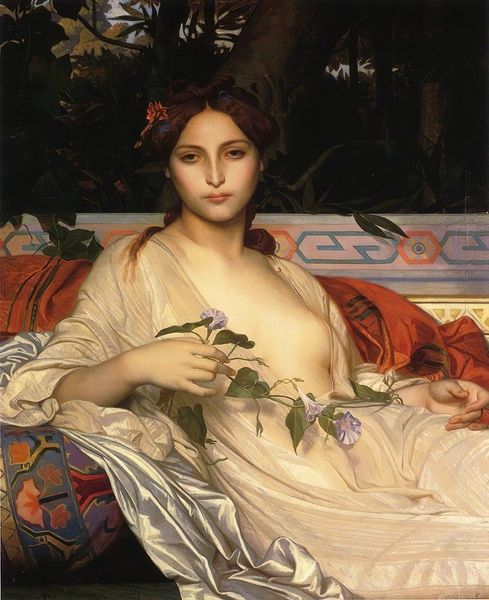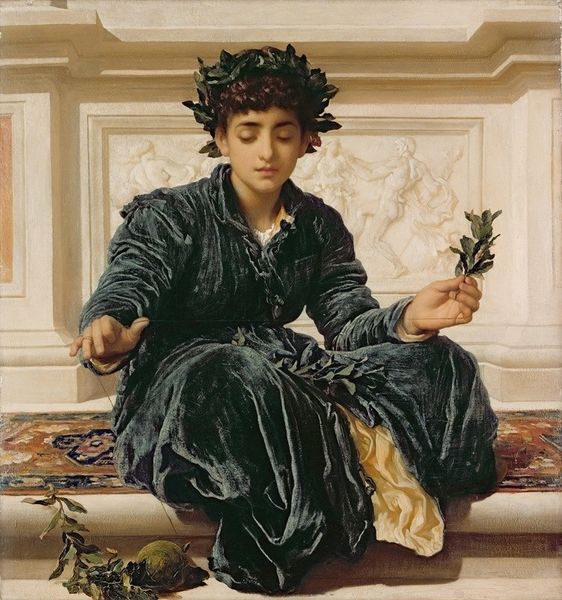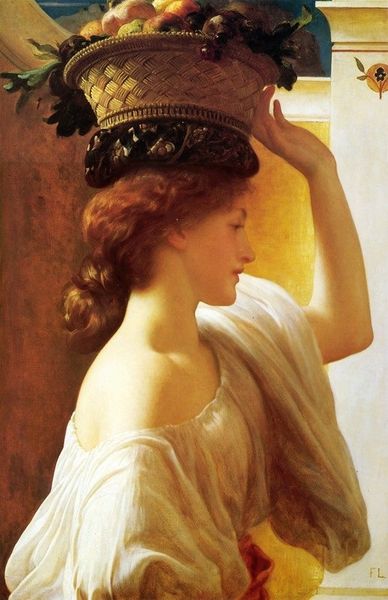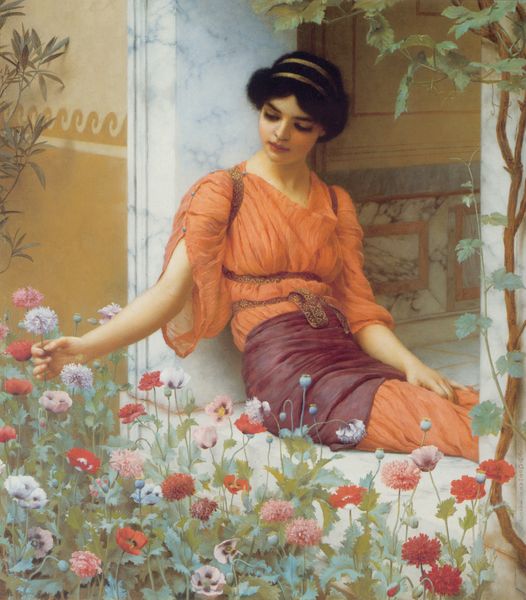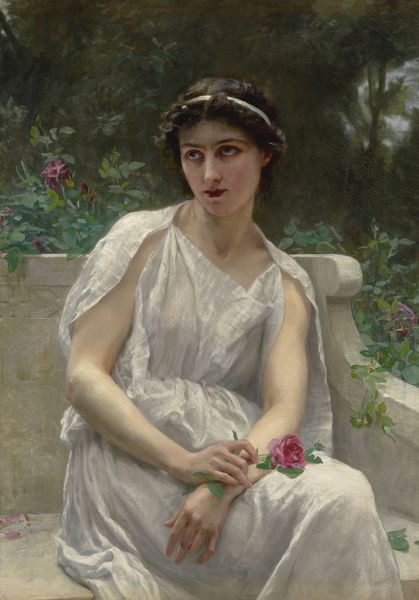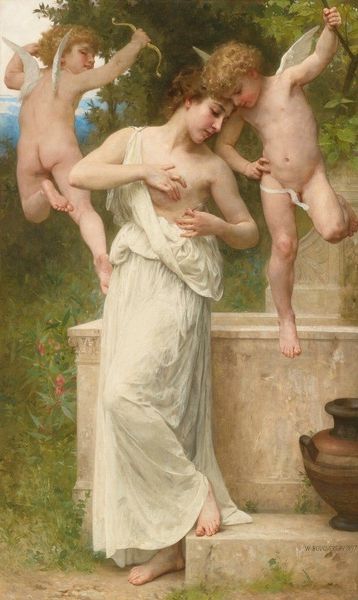
Copyright: Public domain
Curator: Edward John Poynter painted "Psyche in the Temple of Love" in 1882. The medium appears to be oil on canvas, currently residing at the Walker Art Gallery in Liverpool. Editor: My initial impression is one of melancholic beauty. The palette is soft, almost muted, creating an introspective mood around this woman. Curator: Indeed. Consider the historical context. Poynter was a master of academic painting, celebrated for historical and mythological scenes, meticulously rendered. How might this influence your reading of Psyche? Editor: I'm immediately thinking about the male gaze, and how women were often portrayed passively, waiting for love or rescue. Psyche here, with the butterfly on her arm, seems both imprisoned and poised for transformation, perhaps echoing the societal constraints and expectations of women during the late Victorian era. Her pensive state hints at a silent rebellion, a yearning for agency beyond her prescribed role. Curator: It's intriguing how you link her 'prescribed role' to the materiality of the setting itself. The architecture feels manufactured, a stage set almost, built through the precise application of paint to canvas, echoing a wider social architecture of gendered roles. Editor: Precisely! Look at the texture of the marble, juxtaposed against the smoothness of her skin. The cool, hard surfaces of the temple become a counterpoint to Psyche's delicate form. Was Poynter commenting on the commodification of beauty, even within mythological narratives? Or was he merely adhering to the prevailing artistic conventions of his time? Curator: Considering Poynter's adherence to classical themes, and academic techniques – one could posit the work as upholding an idealized notion of feminine beauty. However, by focusing on Psyche's solitary contemplation, Poynter avoids an explicit narrative moment, complicating the interpretation. Editor: Ultimately, the power resides in that very ambiguity. The painting allows for dialogue around how women have been historically portrayed and simultaneously allows space to question it. A gorgeous surface that veils deeper cultural undercurrents. Curator: A testament to the complexity layered within seemingly straightforward classicism. By analyzing these artistic traditions and historical circumstances, it really gives more depth and meaning to an oil painting from 1882.
Comments
No comments
Be the first to comment and join the conversation on the ultimate creative platform.
